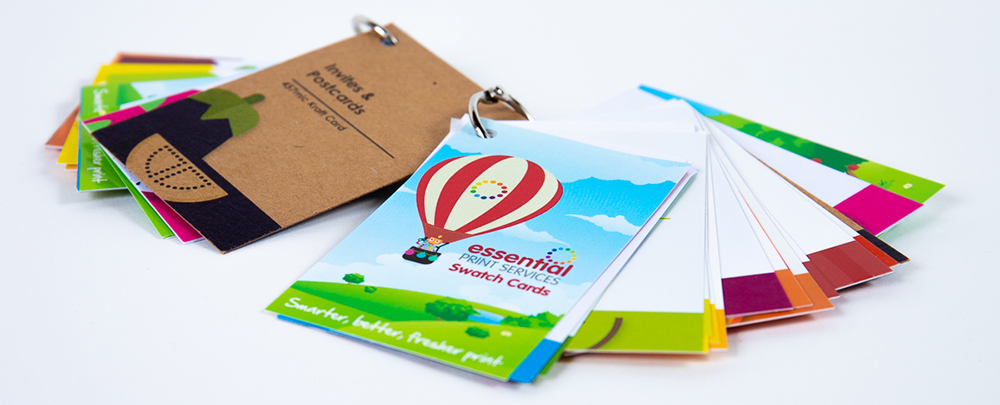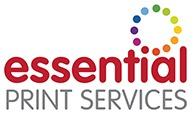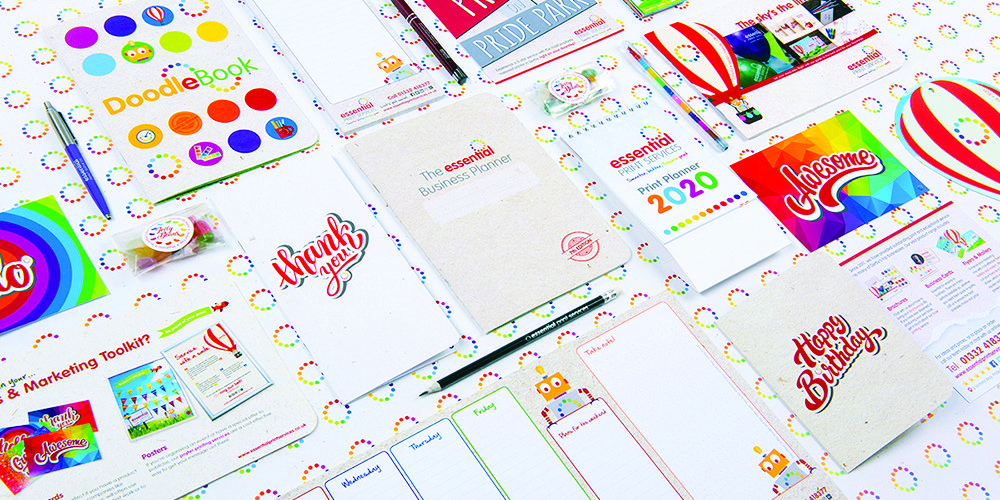So, you’ve decided to have something printed for your business – great but, before you pick up the phone or start typing an email, here are seven things to think about:
1) How many?
How many do you need? And how did you get to that figure? If you plan to leaflet drop your local area yourself to get some exercise, then realistically how many flyers can you get through.
If it’s stationery you need such as letterheads or compliments, think about storage space. How many letters do you send out?
Printers often receive an enquiry such as “I’d like a price for 100, 250, 500, 1000 and 5000” – do you need prices for all five quantities? What about 100 or 250? 2500 or 5000? If you do need a price for all quantities then explain why because your supplier should be able to advise you.
Avoid ordering more than you need. The worse thing for a printer to see is a client’s order gathering dust in a store cupboard because too many were ordered and now they’re out of date. It may only £15 to get double the quantity of something but if you don’t use the extra, the £15 could have been spent elsewhere. It’s not good for your budget or the planet.
2) What size?
Think about what size you’d like your printed piece to be. A4 is great but if you’re posting them, consider an A5 leaflet or booklet to make it cheaper to post.
Do you even need an envelope? Could an A5 or DL size mailer make a better impact? Doing away with an envelope will save you time too.
Shaped mailers can help your print stand out from the crowd and die-cutting cards are nowhere near as expensive as it used to be. So, if you’d like a mobile phoned-shaped flyer or a bone-shaped card, then ask for a price. Newsletters tend to be A4, but they don’t have to be.
Dare to be different.
Newsletters are achieving great results because they are cutting through the digital noise. Its a chance for your reader to have 1-2-1 time with your brand and nowadays, very few marketing activities can have the same effect.
3) Are your artwork files ready to print?
Most printers will ask you for a PDF with 3mm bleed*. Contrary to popular belief, (and I cringe typing this…) but yes, you can use Microsoft Word and Powerpoint to design a flyer. Powerpoint is much easier to use than Word.
If you cannot afford to pay a designer to create your artwork, then have a go yourself. Ask your print supplier for an artwork template, which you can place in your Word document or Powerpoint slide and explain that you’re doing the design yourself. Ask them, “do you have any tips for me?”.
If you have a go at the files yourself, then it may be best to avoid online suppliers who rely on automated artwork checks. Choose a local supplier who will use a human to check files because they will be able to advise you where you’re going wrong, rather than an online supplier who would more likely say, “computer says no”.
The industry standard to create good quality print-ready files is Adobe InDesign or Adobe Illustrator, which can output ‘vectorised’ artwork. Adobe Photoshop is OK but if you don’t set up the artboard correctly from the start, you may end us with text that is not very crisp and blurry images.
If your supplier gives you the bad news that your files are not print-ready and they need to spend some time putting it right, then be prepared to pay a little towards their studio time. Depending on the size of your order, they may be willing to do the changes for free.
One of our clients recently asked us, “why do I have to pay you to put my artwork together, you already have my logo on file”. Your supplier may have all the elements on file but, if they do not have a print-ready file for your compliment slips or flyers, a person in a studio will have to spend some time amending or creating a file for you. Once it’s done and if there are no further changes, you shouldn’t have to pay for it again.
If you supply your Adobe files to your supplier and they tweak them for you, ask them to send the correct files back. Ask them what changes they made so you know for next time.
*3mm bleed = for example, if you’re creating an A5 flyer, your page setup will be 148mm x 210mm. Add 3mm to each edge to provide ‘bleed’ making the overall document 154mm x 216mm. Here’s a link to our set of free artwork templates.
4) What’s your distribution plan?
How will you get your printed items to your audience?
- During a trade fair
- Post to your customer or prospect database
- Networking
- Cold Calling
- Door-to-Door
- Displaying literature in reception areas (not just yours, but ask your business buddies to do it too)
- All of the above
If you plan to post them using your existing database, talk to your printer about their mailing service. Most printers have access to discounted mail services. If you think that it’d be cheaper to stuff envelopes and post your mailers yourself, depending on quantities, you could be in for a surprise.
5) What is your cost to your business?
Think about the value of your time. What is your hourly cost to your business? If you’re going to spend hours and hours designing an A5 flyer…or, stuffing envelopes and getting frustrated because the mail merge isn’t working properly, STOP!
A double-sided A5 flyer, on average, takes about an hour for us to design, which would cost £40 +VAT.
Would it be more cost-effective and quicker to outsource your design and fulfilment to an expert? Do the maths. If you would like to outsource everything (design, print and postage), ask your supplier to offer you a package deal.
6) What materials would you like to use?
If there is no imminent deadline, ask your supplier for a sample pack. If you’re unsure which one to choose, ask your supplier what they’d recommend. You may like a brown kraft board but it may not be suitable for your artwork or project.
If you use several print suppliers, don’t assume that all 170g silk papers or all 350g uncoated cards are the same – there are hundreds of different paper brands available. One brand of 170g silk can feel thinner or thicker than others.
If you would like one of our free swatch packs, please send an email to swatch@essentialprintservices.co.uk and include your postal address.

7) What will a successful campaign look like?
- More sales? How much? By when?
- More followers on social media? How many? By when?
- No expectation?
Your aim could be to send something out once and hope for the best, and that’s fine. You might need some letterheads and therefore, success may be that they are compatible with your office printer.
If you are going to send something out once and hope for the best, remember; unless your name is Rick Astley, very rarely is a one-hit-wonder successful.
A printed campaign is similar to any other marketing – you need to sew it into your marketing mix and possibly repeat the exercise several times in order to get your audience to remember you.
Printing is fantastic when it is integrated with other activities. For example; send an e-shot and then, send a mailer to those clients who clicked on a certain product or service. Or, post an invite to an event and follow that up with an email or targetted social media campaign.
With all that in mind, we hope you’ll add print to your next marketing campaign. If you need prices or advice, please get in touch with us. We want you to be proud of your print. Give us a call or send us a message.








